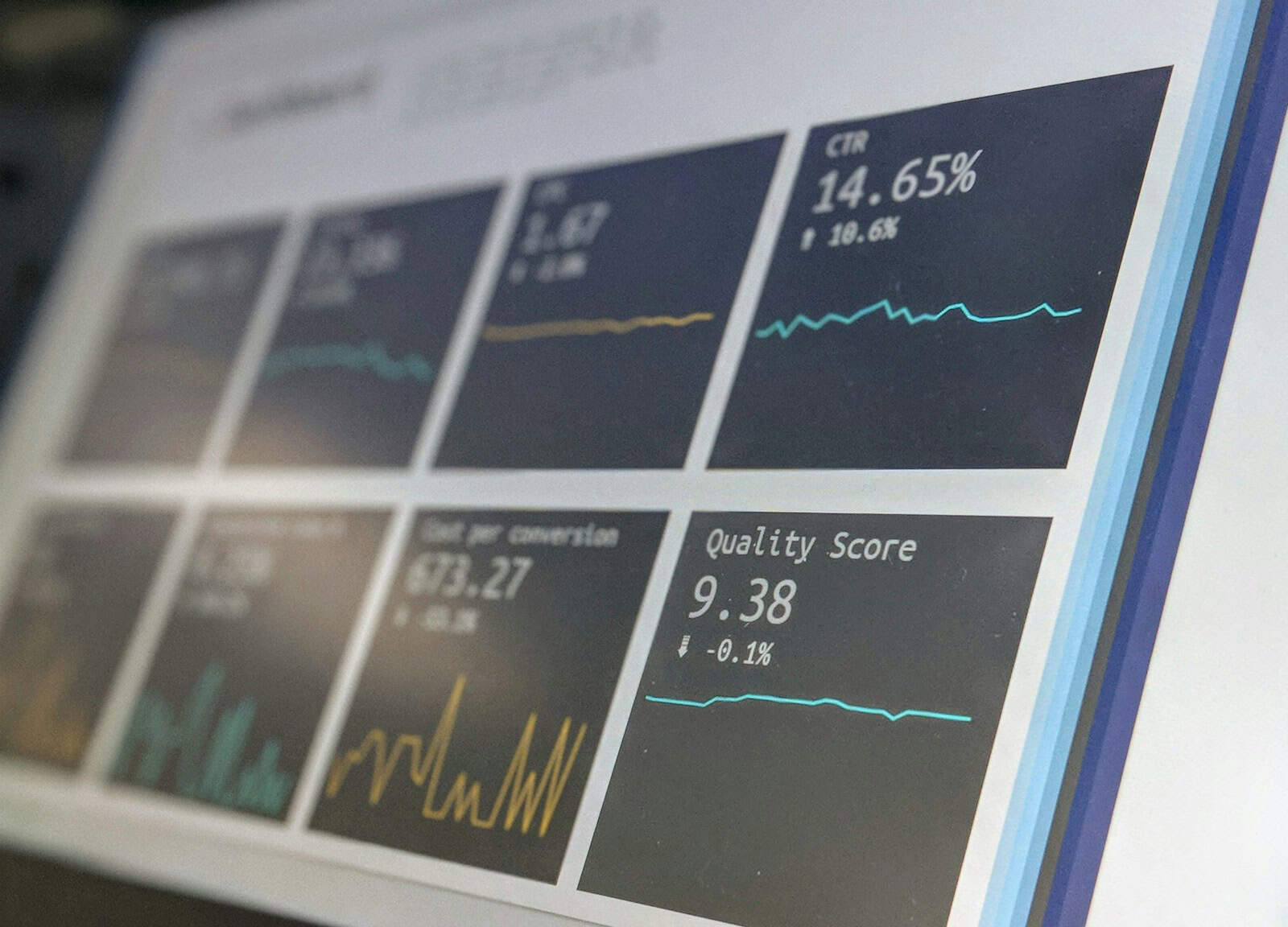Risk management is key to any project’s success. I’ve been using probability impact matrices to evaluate and rank risks for years. This tool allows you to see the threats and opportunities at a glance. It’s basic, but you can make data-driven decisions about how to mitigate each risk. So, here’s how to build and interpret probability impact matrices to boost your project results.
Understanding Risk Probability Impact Matrix

The risk probability impact matrix is another tool that I’ve used time and time again throughout my career. It’s a visual representation that allows you to evaluate and prioritize the risks in your projects or business operations. The matrix is comprised of the probability and impact axes, which intersect to form a grid where you can plot the various risks.
Most risk matrices that I’ve seen use a 3×3, 4×4, or 5×5 grid. The grid size you select will depend on how granular you want your risk assessment to be. A 3×3 grid is more high level, whereas a 5×5 is more granular.
You’ll notice that the grids are color coded using green, yellow, and red to represent low, medium, and high risks, respectively. The color coding is one of the most important visual cues because you can easily assess the risks that need your immediate attention.
There are countless advantages to using a risk probability impact matrix. You can quickly prioritize the risks that matter most, determine which risks require immediate action, and effectively allocate resources. Additionally, it provides a standardized way for everyone in your organization to think about and discuss risk. This has been particularly helpful in my career when collaborating with cross functional teams.
Another benefit of the matrix is its simplicity. You don’t need any fancy software or extensive training to use it effectively. However, remember that while the matrix is a powerful tool, it isn’t a crystal ball. It should be used in conjunction with other root cause analysis methods to ensure that you’re comprehensively identifying your risks.
Creating a Risk Probability Impact Matrix

The idea of creating a risk probability impact matrix can feel overwhelming at first. However, I can promise you it’s a simple process if you think through it step by step. So let me show you how to do it based on my experience building these matrices in various industries.
First, decide on your probability levels, which are usually very low, low, moderate, high, and very high. Then define each of these levels as it relates to your specific project or business. For example, very high might be a 90% chance of happening, and very low might be less than 10%.
Next, define your impact levels, which might be negligible, minor, moderate, major, and severe. Again, define each of these impact levels in the context of your business or project. For example, a severe impact on a small project might be a one-week delay, while a severe impact on a large construction project might be millions of dollars over budget.
Then, assign numerical values to represent each probability and impact level. For example, in a 5×5 matrix, you might use the values 1 through 5 on each axis. This is where you start doing some math. To calculate a risk score, you simply multiply the probability number by the impact number, and in a 5×5 matrix, you’ll end up with risk scores from 1 (low) to 25 (high).
As you build your matrix, make sure you get the right stakeholders involved in the conversation. Their input is crucial to ensure the matrix accurately captures the risk tolerance of your organization. Finally, don’t rush this. Take the time to calibrate your matrix accurately. It will save you headaches in the future.
Analyzing the Likelihood and Consequence Assessment Grid

After you’ve designed your matrix, the next step is figuring out how to interpret it. Don’t worry – it’s not as difficult as it might initially seem. Let’s discuss this step further.
The matrix should visually display risks in terms of both their probability and impact. For most organizations, high-priority risks will be located in the top-right quadrant – the area that keeps project managers awake at night. These risks have a high likelihood of occurring and would be very damaging if they did. Accordingly, you should concentrate most of your risk management efforts here.
Conversely, low-priority risks will be located in the bottom-left quadrant. This doesn’t mean you should ignore them, but they generally don’t require immediate action. It’s a delicate balance. You should definitely be aware of them, but you don’t want to be preoccupied by them when there are more pressing risks to address.
Most matrices use a 1-10 scale for both the probability and impact assessments, which allows for more accurate risk analysis. For example, a risk with an 8 probability and a 9 impact will be a slightly higher risk than something with a 7 probability and an 8 impact, even if both belong in the “high risk” category.
Ultimately, you can use this matrix as a decision making tool to allocate resources, prioritize mitigation efforts, and communicate risk levels to stakeholders. However, it’s essential to recognize its limitations It’s essentially a snapshot of risks at a specific moment in time. Risks will change, and they do so frequently. Accordingly, it’s important to constantly reassess the matrix.
At the end of the day, always remember that the matrix is a tool to support your decision making, not take over for it. Use it as a guideline in your decision making process, but don’t allow it to overshadow the gut feeling or experience you have. I’ve witnessed numerous projects fail because what seemed like a minor risk ended up causing a significant issue, simply because it fell through the cracks.
Tailoring the Threat Likelihood Consequence Grid

Risk probability impact matrices are not one size fits all. I know this because I’ve implemented RPIMs in various industries over the past several years. You should customize the RPIM to the context you’re using it in.
First, think about the industry you work in. The RPIM for a software project will look different from an RPIM for a construction project. The risks a software project might analyze could include scope creep and technical debt. A construction project RPIM might assess safety risks and material delays.
Consider the type of project you’re managing. RPIMs for short-term projects likely have different probability and impact scales than RPIMs for five-year initiatives. A short-term project might be analyzing probabilities over weeks or months, whereas a long-term project might look at probabilities over years.
You should also feel free to change your probability and impact scales. Some companies use a 1-5 scale, while others might use a 1-10 scale. The key is to select a scale that offers enough granularity without overcomplicating the matrix.
You can also add more than just probability and impact to the matrix. One other additional factor I often find helpful is detectability. How easy is it to detect this risk before it becomes a major issue? This is particularly useful in a quality control process.
For example, one company I worked with was a pharmaceutical organization that added a “regulatory impact” factor to their RPIM. This allowed them to more accurately gauge risks related to getting a drug approved. The overarching theme here is to think about other factors that might make sense in the context you’re working in.
Applying the Likelihood-Consequence Assessment Tool

Using a risk probability impact matrix isn’t a one-time exercise. It’s a continuous process, and you need to ensure your team commits to using it consistently. Here are a few insights I’ve gained from my experience implementing these matrices in various organizations.
Integrate the matrix into your existing risk management processes. The risk management process generally includes five steps: identify risks, analyze risks, evaluate/rank risks, treat risks, and monitor/review risks. The matrix should fit naturally into the “analyze” and “evaluate/rank” steps.
Training is essential. You can’t expect your team to effectively use the matrix if you don’t invest in training. I’ve found that the best way to train teams to use the matrix is through interactive workshops. Additionally, allow your team to practice using real examples. This hands-on experience helps solidify their understanding.
The best way to get buy-in and leverage diverse perspectives is to conduct risk assessment workshops. Bring together key stakeholders and subject matter experts, and discuss the risks and where to plot them on the matrix.
Documentation is a step that most people skip, but it’s important. Create clear instructions for how to use the matrix. Document why you assessed each risk the way you did. This will give you a valuable record to refer back to and ensure consistency across different team members or projects.
Keep in mind that risks change, which means a low priority risk yesterday could be a top priority risk today. Make sure to schedule regular reviews and updates to the matrix. At a minimum, I’d recommend at least quarterly reviews, but you should do more frequent updates if the project is evolving quickly or the environment is changing rapidly.
Be patient. Any time you roll out a new tool, it takes time for people to get comfortable with it. You might get some pushback or initial confusion, but as long as you stay committed, provide support, and celebrate small wins, you’ll eventually see the team become much more proactive about managing risks.
Risk Response Strategies

After you’ve identified and assessed risks with your probability impact matrix, the next step of the risk management process is determining how to respond. In my experience with risk management, I’ve found there are four primary risk response strategies: avoid, transfer, mitigate, and accept.
Avoiding a risk is eliminating the risk. You may change your project plan or modify your plan of action. For example, in a construction project, we avoided the risk of soil contamination on a site by moving the project to a different location.
Transferring a risk is shifting the impact of a risk to a third party. A common example is insurance. While you aren’t decreasing the probability that a risk will occur, you’re shifting the financial impact. In consulting, I’ve seen companies outsource in part to transfer some operational risks.
Mitigating a risk is taking action to reduce either the probability of a risk occurring or the impact of a risk. This is probably the most common strategy. You may have extra quality checks, improve training, or perhaps add a backup to a system of lowest impact.
Accepting a risk is not taking any action, but simply documenting that you’ve identified a risk. While this strategy might seem counterintuitive, it’s okay for low priority risks. For example, I’ve seen project managers document a risk but do nothing, and then later they’ll create a contingency budget as a form of risk acceptance.
Select the risk response strategy based on your matrix from the previous step. If it’s high probability and high impact, you’ll probably need to avoid the risk or do something significant to mitigate it. For low probability and low impact, you’re probably likely to accept the risk or transfer it.
Keep in mind the risk response strategies aren’t mutually exclusive. You’ll often use a combination of these strategies for a single risk. The key is making the risk at hand manageable for your project or organization.
Best Practices for Using Risk Probability Impact Matrix

Over the years, I’ve discovered the risk probability impact matrix is only as effective as the team using it. Here are some best practices I’ve developed:
Involve stakeholders and subject matter experts. They’ll offer helpful insights and a different perspective. Their involvement will also create buy-in and ensure it accurately represents your organization’s risk tolerance.
Consistency is key. If teams use the risk matrix differently, you won’t have a consistent data set to analyze. I’ve seen companies make this mistake, and it significantly impacted the accuracy of the data.
Use quantitative and qualitative assessment. While this matrix is great because it results in a numerical score, don’t discount the qualitative factors that can affect a risk’s priority. Sometimes, the context behind a risk or what it might impact is more important than the probability or impact score.
Avoid common mistakes. If the matrix turns into a checkbox exercise, it’s useless. If it’s not dynamic, it’s outdated. Also, watch out for false accuracy. Just because one risk scored an 16 and another an 8 doesn’t mean the 16 is exactly twice as bad.
Continuously optimize. Always question the matrix’s effectiveness. Are the risk categories still accurate? Do the probability and impact scales make sense? For most organizations, I’ve found this is most effective to do once per year.
Remember, it’s a tool, not the solution. You should use the matrix to make decisions, not let the matrix make decisions for you. Use other risk management strategies in conjunction and always use critical thinking.
Lastly, communicate clearly. It’s a useful communication tool, assuming people understand it. Regular training and clear documentation are key to its success.
Case Studies: Risk Probability Impact Matrix in Action

Here are some real world examples of the risk probability impact matrix in action and how it helped those particular businesses. These examples demonstrate the flexibility and power of the risk probability impact matrix across different industries.
In an IT project for a financial services company, we used a 5×5 matrix to evaluate risks associated with a major system upgrade. The risk probability impact matrix revealed data migration had the highest probability and impact, so we allocated more testing resources and created a comprehensive rollback plan. As a result, the upgrade went off without a hitch and didn’t disrupt any of the company’s business operations.
I once used the risk probability impact matrix on a construction project and added a third dimension — detectability — to the matrix specifically for safety risks. Faulty equipment was a severe impact with very low probability, but also had very low detectability, so we used the risk probability impact matrix to justify implementing more thorough equipment checks. Using this methodology, we prevented any serious accidents on the project.
In another scenario, I observed a hedge fund using a 4×4 grid with potential loss as one axis and market conditions as the other axis, effectively a custom risk probability impact matrix that included market volatility. This grid allowed them to dynamically update their risk assessments based on market conditions at any given time and adjust their investments. Consequently, they outperformed during market downturns by using the matrix to guide their investment strategy.
Each of these examples taught me a valuable lesson about the risk probability impact matrix. First, it must be customized to your specific situation to be effective. Second, it requires the right experts present in the room to build your risk assessment. Finally, it should be a living document that you update every time market conditions change.
While these are only a few examples, I learned a lot from each and every one of them. One of the most important takeaways from each of these examples is that the risk probability impact matrix is a powerful tool, but each use case is unique. The key takeaway is you can always adapt the risk probability impact matrix to your specific situation, so long as you maintain the central principles behind the matrix. With practice, you will refine and build a powerful risk assessment matrix.
To further enhance your risk management strategies, you might want to consider implementing the 8 disciplines approach, which can help in problem-solving and preventing future issues.
Before We Go
The Risk Probability Impact Matrix is an essential risk management tool. I’ve used it successfully in several industries, and it is an excellent way to systematically prioritize risks, so you can address the most important ones first. Just remember to identify risks, assess them, and select the best response strategy. While it’s not flawless, it’s a helpful addition to your risk management tools. So use it intelligently and consistently to improve your decision making and project results.






